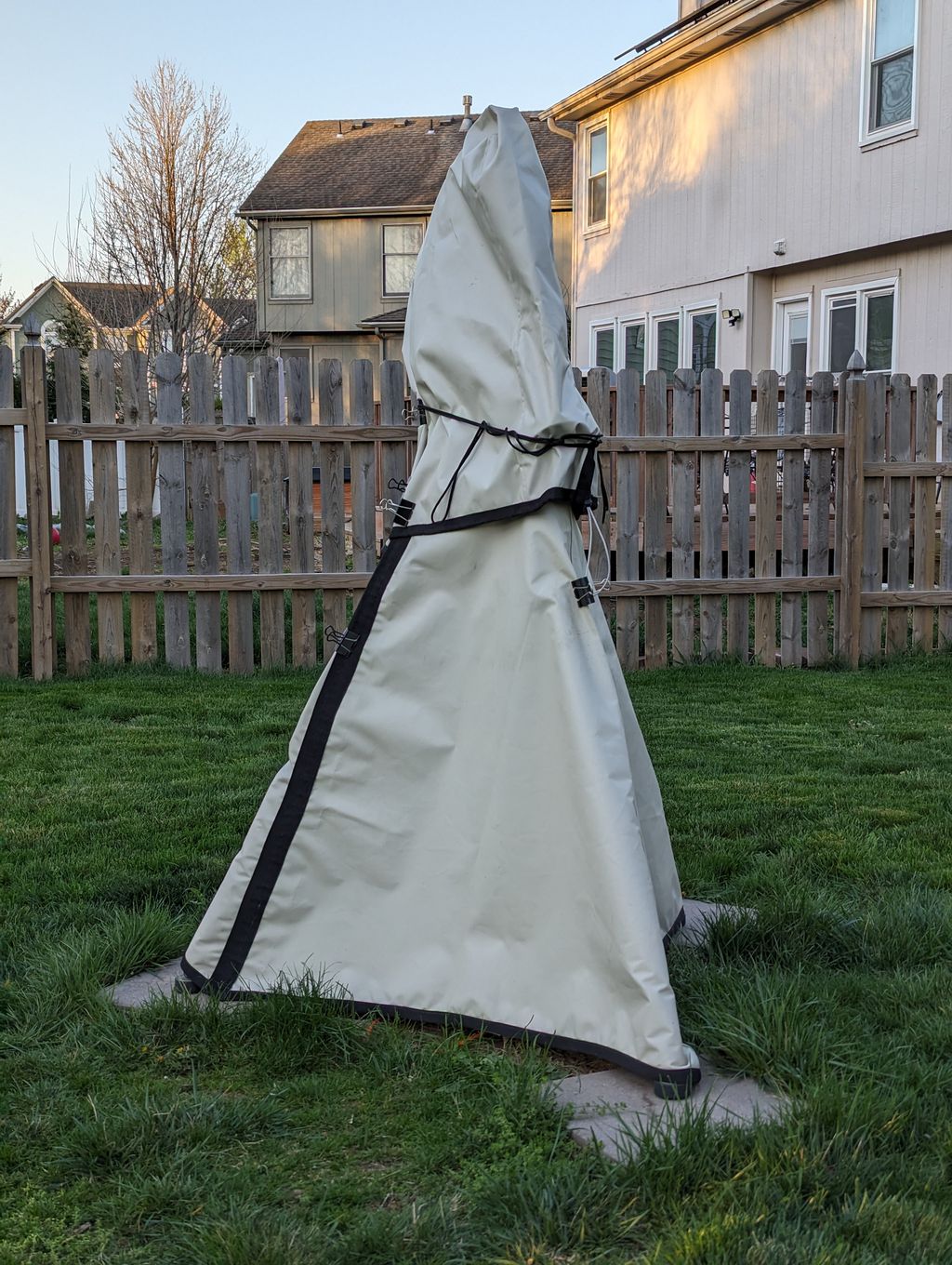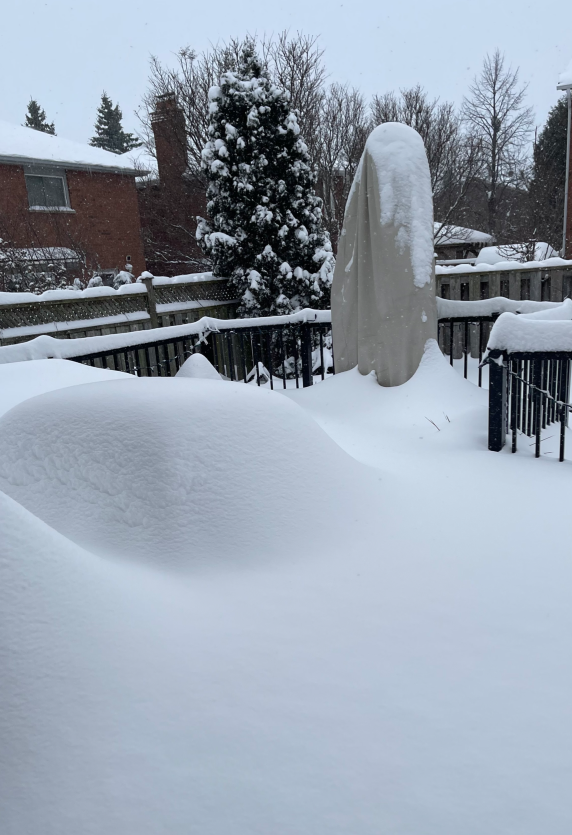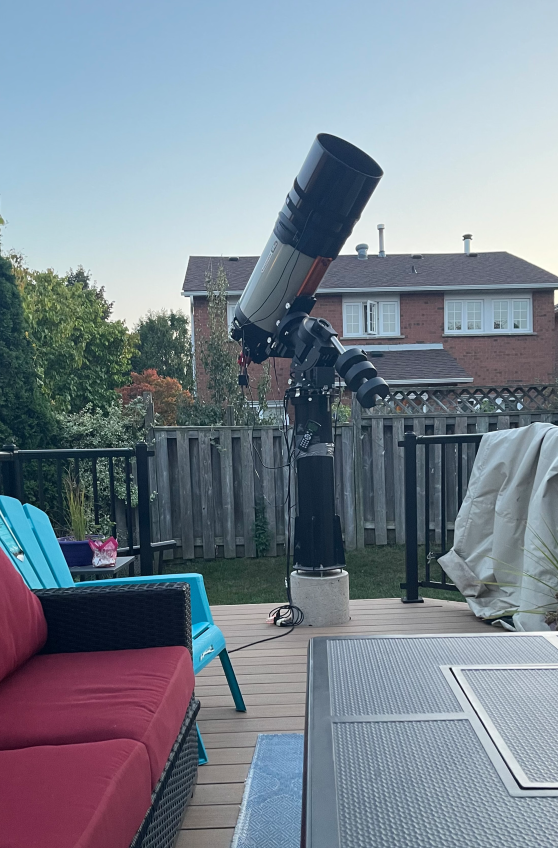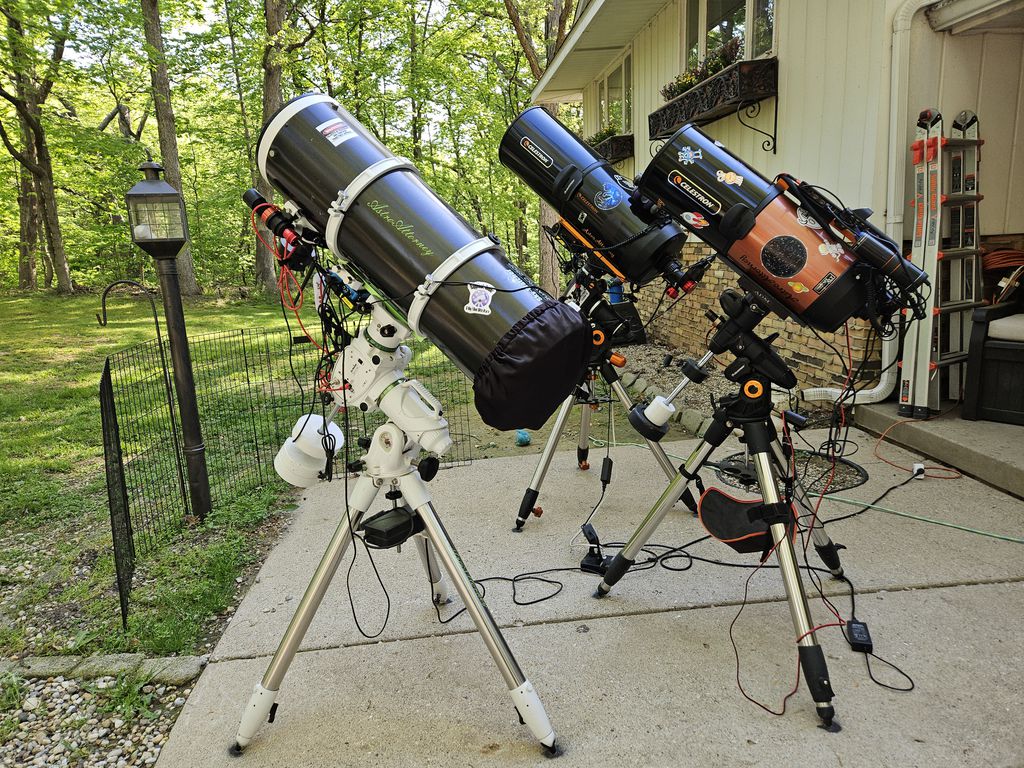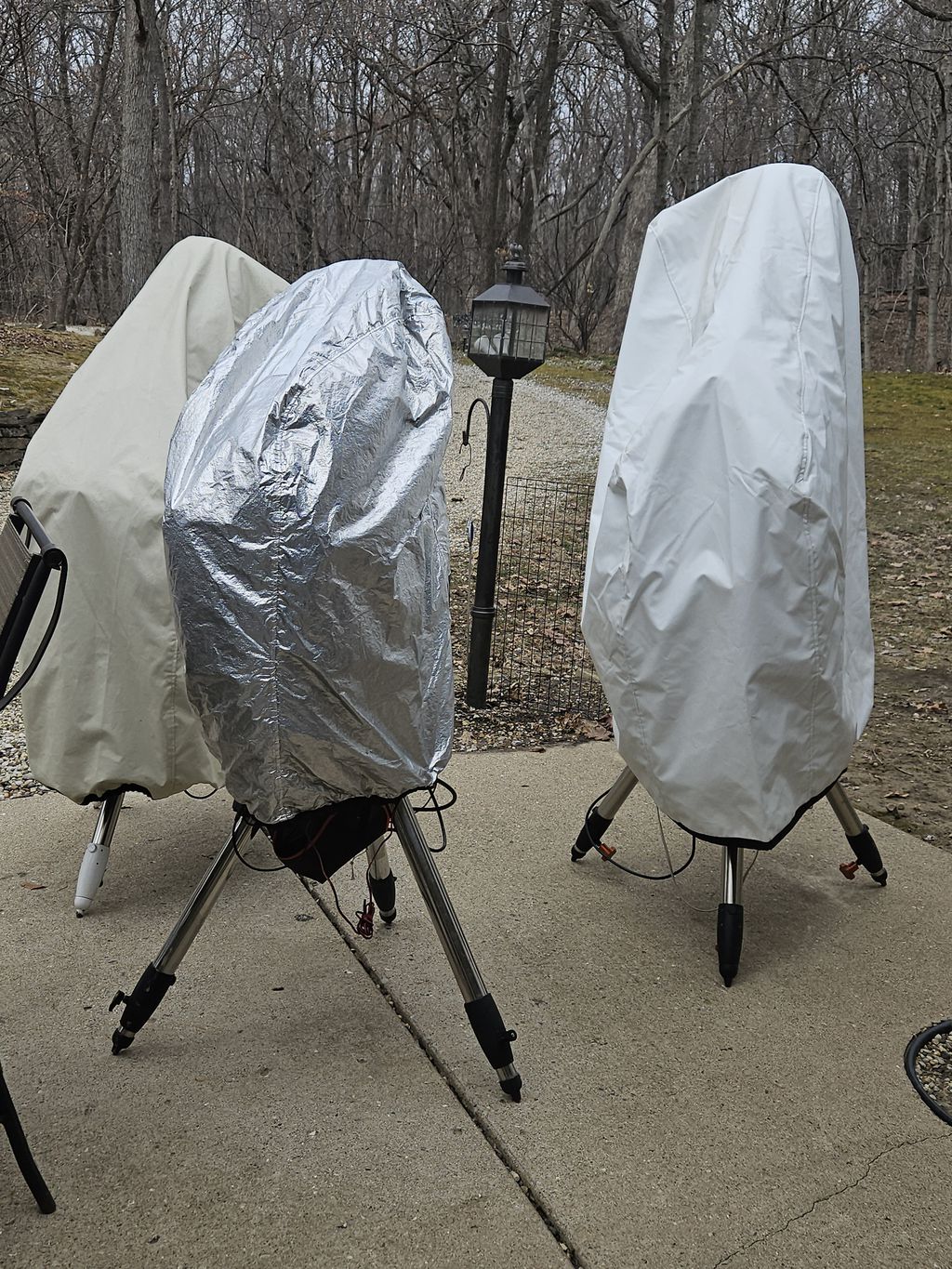As I see a lot of questions about long-term outdoor storage with covers, I thought I'd share here my successful experience after
To avoid any unnecessary suspense, here's my current storage solution, from the outside in:
1. Telegizmos 360 for medium newtonian reflectors
2. Geoptik medium-sized cover
3. Dew towel-detector
4. Guidescope covers
5. Rechargeable desiccant
6. Active air duct to the outside
7. Garden protection box for electrical connectors
8. ISO box for electronics
1. Telegizmos 360 for medium newtonian reflectors: This is the main protection against almost anything. The fabric is strong, multi-layered and the reflective inside fabric limits heat radiation and therefore dew formation at night. You may notice that my scope is protected from strong wind gust by the building main wall. There is not risk that the scope falls on the side du to wind.
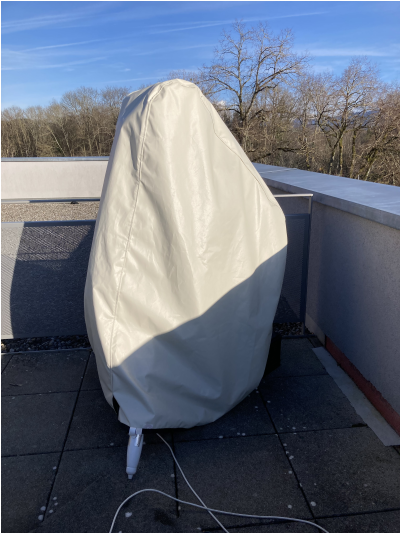
2. Geoptik medium-sized cover: Under the telegizmos, I'm still using my old cover. It's a very effective three-layer blanket that I used for 8 months as my main cover. Unfortunately, the outer layer started to delaminate and ice built up between the first and second layers in winter.I'm still using it under the Telegizmos because before installing the active ventilation system (see below), I noticed some dew build-up under the Telegizmos. I think the temperature gradient at the top of the cover between inside and outside was too high, which led to dew forming. Using both covers, I've never had this happen.

3. Towel dew detector (and absorber): I use the towel to absorb any arising dew that could arise from humidity accumulating under the covers over several nights. This is how I noticed that dew formed once during the first week of using telegizmos without the geoptik cover and without the active air sucking described below. With both blankets, I never found the towel damp. As a precaution, I continue to use it. It also nicely protects the gears from scratches due to movement of the covers.

4. Guidescope covers: made from cardboard packaging, this layer is designed to prevent the guidescope screws from damaging the covers. It also raises the covers so that there is a generous gap between the covers and the gears. In the event of hail, the solid telegismos and this spacing will ensure that the OTA is not damaged.
EDIT : I removed this as I now use an OAG.
5. Rechargeable desiccant: It can be regenerated by plugging it into the wall overnight and absorbs up to 250 mm of water. Initially, I had no active ventilating system and I was restricting the lower part of the cover, so that having this was making much more sense. As it cannot harm, I still us it.
EDIT : this is no longer in use. Now, I put it inside the airtide box in with I store (inside the house) cameras, filters and my corrector. This is as dry as it can get.
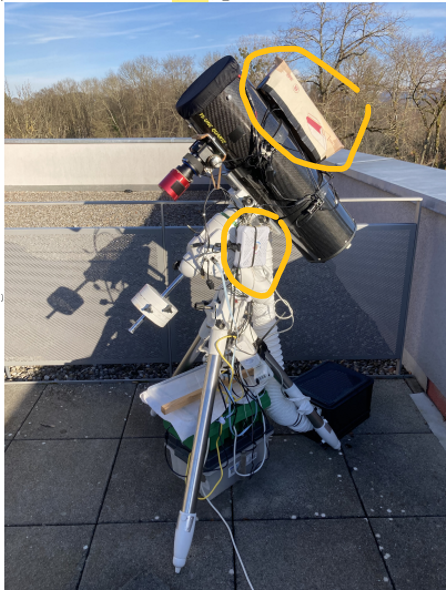
6. Active air duct to the outside: This is undoubtedly the most important part. To make sure that no moisture builds up under the covers over several nights or weeks, I installed a duct pumping air from the top of the installation, next to the OTA, to the outside of the cover. The outlet is at the back of the blackbox, which is never under the cover. The air flow is generated by an Intel processor fan that I wasn't using. It is active 7/24. This DIY job cost me about 30 euros and it ensures that the air is renewed at a rate that prevents moisture build-up.

Here is a view where you can see the CPU fan down the duct:
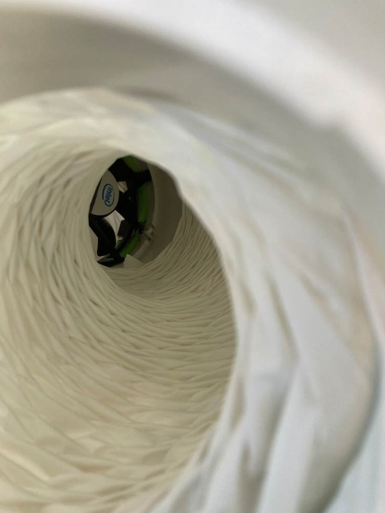
7. Garden protection box for electrical connectors: the green box contains the main connectors and a circuit breaker. The grey box was empty and was removed since then.
8. ISO Box for computer, 10A 12V industrial power supply, power converters, fuses and 220v remote switch
Since the picture above were taken, I added a box containing all the electronics and electric circuitery. The PC is a beelink S12.
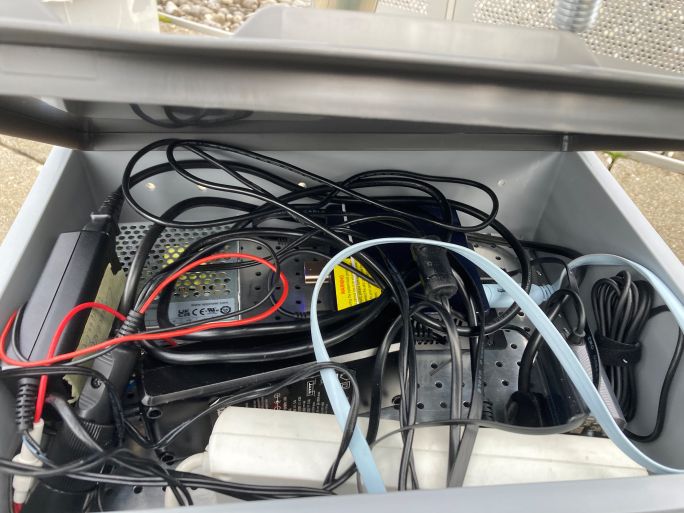
The setup is much cleaner now :
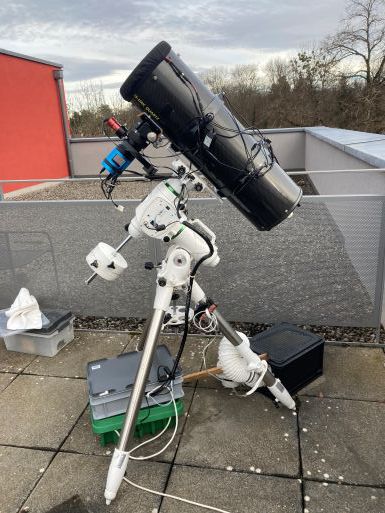
So I think my equipment is pretty well protected. The only limits I can see are very strong winds and very strong hail. However, with the external wall that I have all around the roof, the winds have to be extremely strong to affect the stability of the equipment. I've never had a problem, but I did once or twice bring the OTA indoors because an exceptionally strong storm was forecast.
But I've never seen that where I'm leaving in Switzerland. My location on the Swiss plateau, et 650m elevation, 72% humidity in average with a peak in January at 85%. Stored in this way, my setup can be ready in 5 to 10 minutes, depending on the need to check collimation. In my experience, this is an excellent way of keeping instruments outdoors without having to build a proper observatory.
I hope this contribution is useful. Clear skies !

EDIT : after now 31 months, everything still running strong without any sign of rust or degraded performance. I had to clear the corrector once exteriors glasses, but who doesn't ? I am not considering cleaning the mirror yet, eventhough I can see that some dust is slowly accumulating. Given that this dust accumulated over 3.5 years, I assume it is a normal rate and that bringing everything inside would not make much of a difference.
EDIT2: I added section 8



